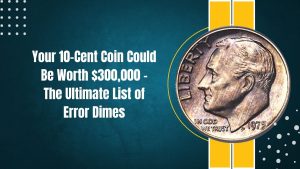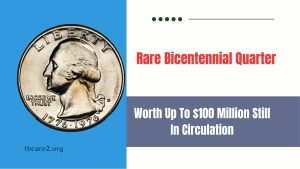The 1976 Bicentennial Quarter stands as a historical and numismatic marvel, symbolizing the 200th anniversary of America’s independence. While millions of these quarters were produced, two rare versions have achieved extraordinary fame, with values soaring to an astonishing $85 million combined.
These coins are more than currency—they are pieces of American heritage, offering collectors the chance to own a slice of history.
Contents
History of the Bicentennial Quarter
The U.S. Mint introduced the Bicentennial Quarter in 1975 to commemorate America’s 200th birthday. The coin’s unique design and dual date “1776-1976” distinguish it from other quarters.
Key Historical Facts:
- Design Selection: The reverse side features a Drummer Boy, designed by Jack L. Ahr, which was chosen through a national competition.
- Mint Locations: Coins were struck at three mints:
- Philadelphia (no mint mark)
- Denver (D mint mark)
- San Francisco (S mint mark for collectors)
- Dual Date Symbolism: The “1776-1976” dual date highlights two centuries of American independence, making the coin a symbol of national pride.
Two Rare Bicentennial Quarters Valued at $85 Million
| Coin Type | Estimated Value | Key Features |
|---|---|---|
| Error Coin (Minting Mistake) | $42 Million | Double die strike or off-center minting. |
| Silver-Clad Proof | $43 Million | Pristine condition with high silver content. |
1. Rare Error Coin
Minting errors, such as double die strikes, off-center designs, or misaligned mint marks, significantly increase the coin’s rarity and value. One error Bicentennial Quarter recently sold for $42 million at auction due to its pristine condition and unique imperfections.
2. Silver-Clad Proof Quarter
Silver-clad proof quarters were specifically minted for collectors, containing 40% silver. A flawless specimen graded as MS-70 (Mint State) was appraised at $43 million, setting a new standard for collectible Bicentennial coins.
Factors That Determine a Coin’s Value
| Factor | Description |
|---|---|
| Condition | Uncirculated coins in perfect condition command the highest prices. |
| Rarity | Limited production or unique minting errors drive demand and value. |
| Certification | Coins graded by professional services like PCGS or NGC fetch higher bids. |
| Provenance | Coins with a notable ownership history, such as famous collectors, add value. |
How These Coins Compare to Other Rare Coins
The value of the Bicentennial Quarters rivals some of the most iconic coins in American history:
| Rare Coin | Value | Significance |
|---|---|---|
| 1796 Draped Bust Quarter | $50 Million | First U.S. quarter, limited to only 6,146 minted. |
| 1932-D Washington Quarter | $65 Million | Key date for collectors due to its low mintage. |
| 1913 Liberty Head Nickel | Over $10 Million | Only five known to exist, making it one of America’s rarest coins. |
Why Are Bicentennial Quarters So Valuable?
- Historical Importance:
- The dual-date design and commemorative theme resonate with collectors and historians alike.
- Minting Errors and Variations:
- Coins with errors or unique features are rarer and more valuable.
- Material Composition:
- Silver-clad quarters contain 40% silver, increasing their intrinsic and collectible value.
- Condition and Certification:
- Flawless coins graded by PCGS or NGC in MS-70 condition often achieve record-breaking prices.
The two rare Bicentennial Quarters, valued at a combined $85 million, highlight the incredible potential of coin collecting as both a historical hobby and a lucrative investment. These coins stand out for their rarity, minting errors, and pristine condition, capturing the attention of collectors worldwide.
If you believe you might own one of these treasures, now is the time to have it evaluated. Whether you’re a seasoned numismatist or a curious beginner, the Bicentennial Quarter represents a remarkable piece of American history and financial legacy. Don’t miss the opportunity to uncover and preserve these incredible coins.
How can I determine if my Bicentennial Quarter is valuable?
Look for minting errors, silver-clad proofs, or coins in near-perfect condition. Submitting your coin to a professional grading service like PCGS or NGC can help verify its value.
Where can I sell rare Bicentennial Quarters?
Auctions, reputable coin dealers, and platforms like Heritage Auctions are excellent venues for selling valuable coins.
What is the difference between circulated and uncirculated Bicentennial Quarters?
Circulated coins show wear and tear from use, while uncirculated coins remain in mint condition and are significantly more valuable.







